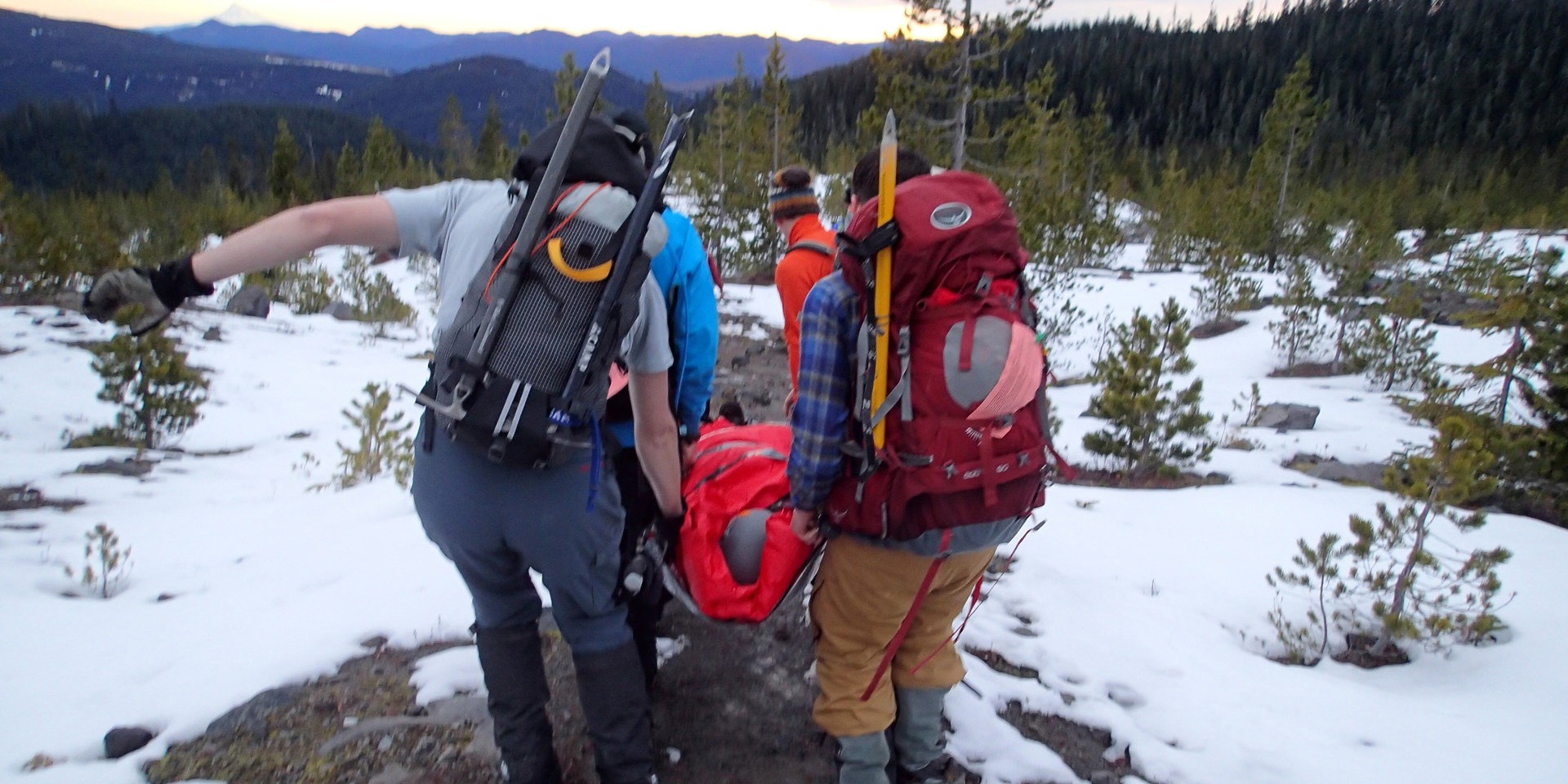You are here
I spent a while considering a Wilderness First Responder (WFR) course before actually signing up. Over the past year, as I was completing more frequent and challenging trips, I felt that an in-depth knowledge about how to handle emergency situations in the wilderness was necessary. Accidents can happen at any time and nobody wants to be involved in one, but when it does happen, I wanted to know what to do.
After searching for available courses in my area, I signed up for a 5-day extensive course with Wilderness Outings in a small Southern California town called Idyllwild. Within a couple days of registering for the course, a heavy package came in the mail. Inside there were three books and a note informing me that every page in those books needed to be read, as well as an online pre-course taken, before the first day of the class. They noted that the pre-course assignment would take about 25 hours, adding considerable time to the five days I would spend in class itself.
I arrived at the camp along with eight other students. Although our backgrounds were varied, we shared the same goal, namely to equip ourselves with actionable knowledge in the event we encounter an emergency in the wilderness. With these introductions, the course officially started.
Over the next five days, we crammed as much information into our brains and practiced as much as possible. The presentation was a lecture mixed with questions and drills. Although at times the pure volume of content felt overwhelming, we were determined to absorb all of it. We learned how to assess a patient in a single incident and in a multiple-casualty scenario, how to manage a wound, the basics of backcountry medicine and CPR, how to treat spine injuries, and covered many other useful topics. Although all of these lessons were focused on wilderness situations, they provided valuable lessons for urban emergency preparedness as well.
It was the ultimate boot camp for my brain. Honestly, I hadn't had to memorize that much information since high school.
On the last day, the instructor set up various simulations where some of us pretended to be patients and others became the responders who arrived at the scene with very little information, but were expected to know what to do. I found this method to be a great way to learn how to deal with stress and gain experience with the varying patient conditions I could encounter in real life.
On our fifth day, it was at last time for the written test, a necessity to become a certified Wilderness First Responder. As a testament to the quality of our instructors and the manner in which they taught us, we all passed.
Now that the course is finished, I have never felt so much respect for all the emergency providers that work in our wilderness spaces. Hopefully no one will find themselves in an emergency situation in the wilderness, but to minimize the risk of emergency, consider these tips I learned in my class:
Focus on solid planning and trip preparation
Sure, being spontaneous is great, but making sure that you have everything you need is vitally important. Packing the 10 essentials is a good start:
- Navigation (map and compass)
- Sun protection (sunglasses and sunscreen)
- Insulation (extra clothing and socks)
- Headlamp
- First-aid supplies
- Fire (waterproof matches/lighter/candles)
- Repair kit and tools (knife or multi tool)
- Nutrition (extra food)
- Hydration (extra water)
- Emergency shelter
Know your adventure partners
This doesn't mean you have to know everything about them, but knowing any medical conditions and a basic health history is helpful in case something happens. It's especially good to know if anyone has any allergies or takes regular medications.
Pay attention to changing weather
There are many places to get accurate weather forecasts. NOAA's weather.gov is a reliable website for weather forecasts in United States (and the source used for weather information on Outdoor Project). But while you are in the wilderness, pay attention to how the weather changes as your trip progresses. For instance, a light snow on the way up might become a danger on the way down after just a couple hours of continuous snowfall.
Know the signs
We know ourselves better than anyone. By paying attention to how your body is feeling, it will help you prevent some dangerous situations, and a little bit of prevention goes a long way. For example, staying well hydrated will prevent more severe dehydration that can cause an altered mental state, compounding related problems.
Stay calm in case of emergency
If an emergency does happen, do your best to stay calm. This will help you make better decisions and coherently inform a first responder of what has happened. A big part of the WFR course is being trained to be able to assess the situation quickly and take any necessary action based on that observation.
Are you interested in becoming a Wilderness First Responder? These respected organizations provide trainings across the U.S. West Coast. Check out their websites, linked below, for course offerings, dates and costs.
- NOLS operates in many locations across the United States
- The Mountaineers is based in Seattle, Washington
- Ready SF is located in San Francisco, California
- Trackers Earth is in Portland, Oregon
- Wilderness Outings, the organization I used for the training, operates in various Southern California locations





Comments
Sign In and share them.